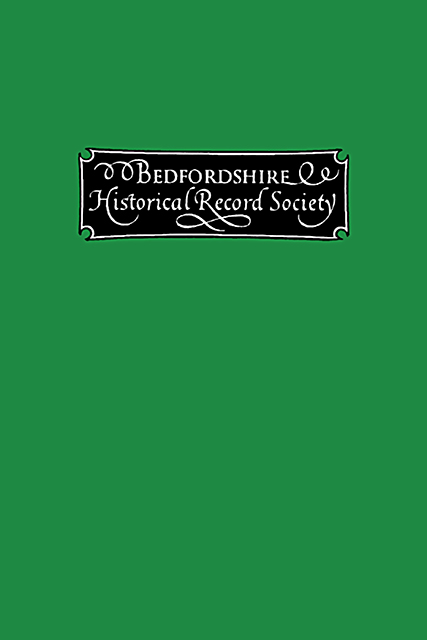Ancient Bedfordshire Deeds. II.: Deeds Relating to Elstow.
Published online by Cambridge University Press: 18 July 2023
Summary
[PREFATORY NOTE.—This collection of deeds, which is in the possession of Mr. Page-Turner, should be of great interest to the historian of Elstow. It is somewhat unusual in the number preserved for a single property, and in the period of more than a century which it covers.
To those unacquainted with the conveyances of the period, one or two points perhaps require a word of explanation. One of these is the method of defining the arable land which was to be conveyed by the deed. Since such land was held, as a rule, in strips of a rood, a half acre, or an acre, scattered over the Open Fields, and not in closes or hedged fields, each strip is defined by the ownership of the strips north and south (or east and west) of it, and by the name of the field, road, or other recognisable land on which it ‘ abutted ’ at one end of the furrows. Another point is the often recurring phrase, ‘to be holden of the chief lord of the fee by the services due and of right accustomed,’ or similar words. This is a reminiscence of a much older social system. In early times the lord of a manor held his land from such a tenant-in-chief of the Crown as Beauchamp of Bedford, on condition that he rendered ‘Knight Service.’ (See B.H.R.S. articles on this subject). But after that actual service in the field had been commuted for a money payment or scutage, when the lord of the manor parted with some of his land, the land was sold burdened with its proportional share of this payment or other service, due to the chief lord, and termed forinsic service; to such service the phrase refers.
Another interesting echo of earlier times, a relic of villanage, is seen in No. xvii; by this deed a work-rent is still exacted,—a day’s labour in harvest time to be done by an able-bodied man, finding his own food.
The Bunyans mentioned in Nos. xliii, xliv, l, li, liii, are Thomas Bunyan, described as ‘brazier,’ and as ‘ petty chapman,’ and Anne his second wife, widow of John Bidkin of Elstow, the grandfather and step-grandmother of the famous John Bunyan.
- Type
- Chapter
- Information
- Publisher: Boydell & BrewerFirst published in: 2023



